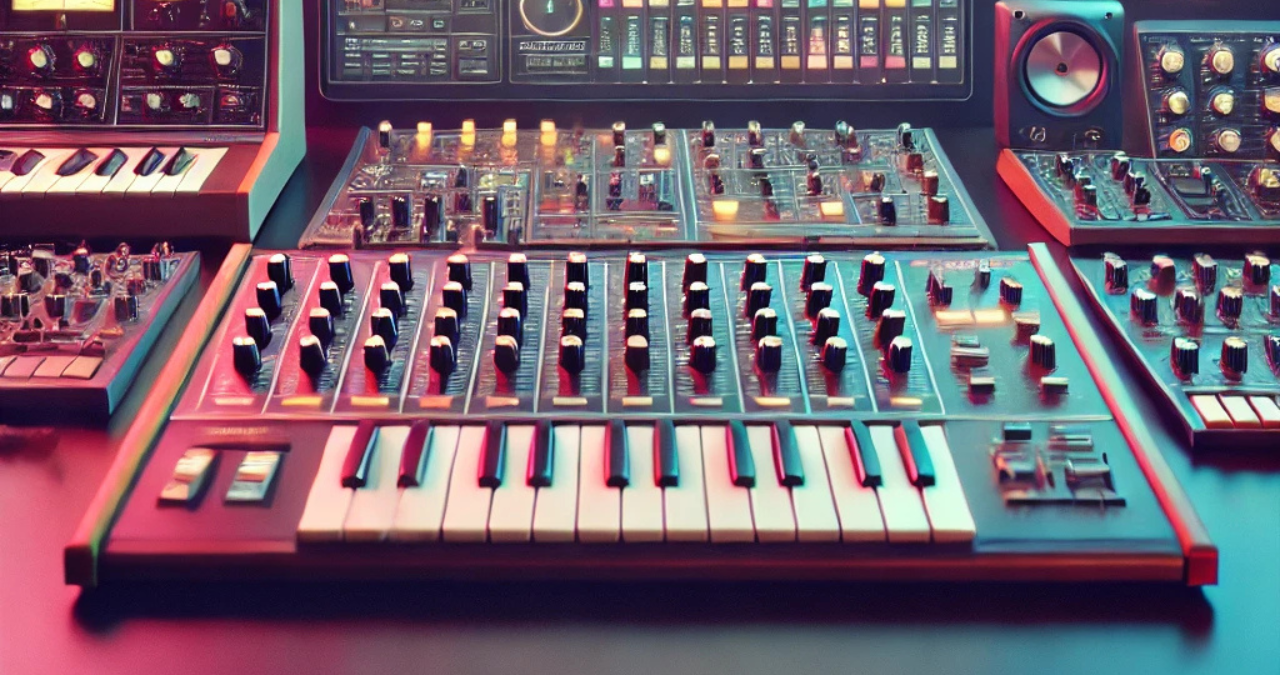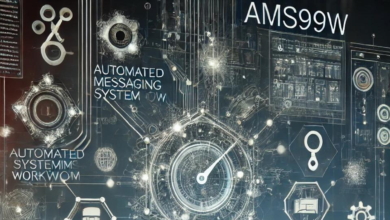The Fairlight CMI (Computer Musical Instrument) is a legendary digital synthesizer that revolutionized the music industry in the late 1970s and early 1980s. Among its most iconic sounds is the ARR1 soundfont, a key element in shaping the music of an era of electronic innovation. This article explores the history, features, and modern usage of the Fairlight CMI ARR1 soundfont, offering insights into how musicians and producers today can harness its power to create timeless soundscapes.
History of the Fairlight CMI and ARR1 Soundfont
Australian innovators Peter Vogel and Kim Ryrie invented the Fairlight CMI in 1979. It was the first commercially available digital synthesizer and sampler, enabling artists to record, manipulate, and play back samples in ways that had never been done before. The Fairlight CMI became an instant sensation, embraced by some of the most influential musicians and producers of the time, including Peter Gabriel, Kate Bush, and Stevie Wonder.
One of the Fairlight CMI’s most renowned aspects was its library of pre-loaded samples, among which the ARR1 soundfont was particularly significant. The ARR1, known for its distinctive orchestral hit, became a hallmark of 1980s music. It featured prominently in pop, rock, and even early hip-hop productions, giving songs an unmistakably futuristic and dramatic flair. The ARR1 sound often emphasized climactic moments in tracks, adding a rich, bold texture that caught listeners’ attention.
What is the ARR1 Soundfont?
The ARR1 soundfont is a digital representation of one of Fairlight CMI’s most famous sounds. It is a virtual file containing audio samples that mimic the original orchestral hit, allowing users to reproduce the sound on modern devices and digital audio workstations (DAWs). Composers and producers commonly use sound fonts to access a wide range of instrument sounds without needing physical instruments.
The ARR1 soundfont, in particular, holds nostalgic value for those who remember its use in the 1980s. Today, it is available in various formats compatible with most DAWs, making it accessible to anyone looking to incorporate this classic sound into their modern productions.
Features of the Fairlight CMI ARR1 Soundfont
The Fairlight CMI ARR1 soundfont comes with several distinct features that make it a versatile tool for music production:
- Iconic Orchestral Hit: The ARR1 sound is characterized by a sharp, percussive orchestral hit perfect for emphasizing a song’s transitions or climaxes.
- Wide Range of Compatibility: The sound font is available in formats such as SF2 (SoundFont 2), making it easy to integrate with most DAWs, such as FL Studio, Ableton Live, Logic Pro, and more.
- Digital Precision: While the original Fairlight CMI was limited by the technology of its time, today’s ARR1 soundfont offers digital precision, ensuring that every note is crisp and clear.
- Customizable Parameters: Users can manipulate the sound in various ways, including adjusting pitch, reverb, and attack to suit the specific needs of their projects.
- Low Resource Consumption: Unlike some larger sample libraries, the ARR1 soundfont is lightweight, allowing it to be used in multiple instances without overwhelming system resources.
How to Use the Fairlight CMI ARR1 Soundfont
If you’re eager to incorporate the Fairlight CMI ARR1 soundfont into your music, here’s a step-by-step guide on how to get started:
Download the Soundfont
First, find a reliable source to download the Fairlight CMI ARR1 soundfont in the correct format (e.g., SF2). Many websites offer sound fonts for free or for a small fee. Ensure that the file is compatible with your DAW.
Load the soundfont into Your DAW.
Once downloaded, open your DAW and navigate to the instrument or sampler section. Load the ARR1 soundfont using your DAW’s soundfont player or a compatible plugin. Most DAWs have built-in support for SF2 files, but you may need to download a free plugin if your DAW doesn’t support soundfonts natively.
Test the Sound
Play a few notes to familiarize yourself with the ARR1 sound. The orchestral hit should have a powerful, punchy tone. Adjust the volume levels or velocity to suit your track if it sounds too quiet or loud.
Experiment with Modifications
The beauty of digital sound fonts is the ability to tweak them. Use your DAW’s built-in effects and modulation tools to adjust the sound. You can add reverb for a more spacious feel or manipulate the EQ to bring out certain frequencies. The ARR1 soundfont can be used creatively in various genres, so don’t be afraid to experiment.
Incorporate the Sound into Your Music
The ARR1 sound is perfect for adding drama to your music. Whether creating pop, electronic, hip-hop, or cinematic soundscapes, this SoundFont can be a powerful tool for building climactic moments. It works particularly well for a song’s intro or outro hits, breakdowns, or transitional segments.
Modern Uses of the Fairlight CMI ARR1 Soundfont
Despite being over 40, the Fairlight CMI ARR1 soundfont continues to find its way into modern music. Producers today use the sound as a nod to the past while adding a contemporary twist. Here are a few ways the ARR1 soundfont is being used:
Retro Synthwave and Vaporwave
The resurgence of 1980s-inspired music genres like Synthwave and Vaporwave has brought back the ARR1 soundfont in a big way. Artists use it to evoke nostalgia, tapping into the signature sounds of classic video games and movies.
Cinematic Sound Design
Film and video game composers often use the ARR1 soundfont to create dramatic soundscapes. Its powerful orchestral hit can emphasize action scenes, trailers, or epic moments in a storyline.
Pop and Hip-Hop Production
Just as it was used in the 80s, the ARR1 soundfont is still popular in pop and hip-hop production. It adds an impactful edge to beats, making it a great option for transitions, drops, or hooks.
Remixing and Mashups
The ARR1 soundfont is a fun addition to remix projects, especially when blending old-school vibes with modern production techniques. Its bold, recognizable sound helps bring a retro twist to contemporary tracks.
Tips for Getting the Most Out of the ARR1 Soundfont
If you want to maximize your creative potential with the Fairlight CMI ARR1 soundfont, keep these tips in mind:
- Blend It with Other Sounds: Be bold and layer the ARR1 soundfont with other instruments. Blending it with strings, synths, or percussive elements can add depth and complexity to your tracks.
- Use Sparingly: The ARR1 orchestral hit is powerful, so use it strategically. Overusing it can dilute its impact. Please place it in key moments of your song for maximum effect.
- Explore Pitch Modulation: Play with pitch shifting to alter the mood of the ARR1 soundfont. Lower pitches can create a more dramatic, ominous tone, while higher pitches can make it sound bright and uplifting.
- Apply Effects: Reverb, delay, and chorus effects can add dimension to the sound, making it more immersive. Experiment with these effects to see what fits your project.
- Keep It Subtle: In some cases, less is more. Rather than making the ARR1 sound the focal point, you can use it as a subtle background element to enhance the overall atmosphere of a track.
Conclusion
The Fairlight CMI ARR1 soundfont is a timeless piece of musical history that continues to inspire producers today. Its iconic orchestral hit has left an indelible mark on music, and thanks to modern technology, it’s easier than ever to incorporate this classic sound into your projects. Whether aiming for a retro vibe or adding a dramatic touch to your music, the ARR1 soundfont offers endless creative possibilities.
FAQs About the Fairlight CMI ARR1 Soundfont
1. What is the Fairlight CMI ARR1 soundfont?
The Fairlight CMI ARR1 soundfont is a digital recreation of one of the Fairlight CMI’s most iconic sounds—an orchestral hit widely used in 1980s music. Modern producers can access this classic sound in their digital audio workstations (DAWs).
2. How do I use the Fairlight CMI ARR1 soundfont in my DAW?
Download the ARR1 soundfont in a compatible format like SF2, load it into your DAW’s soundfont player or a compatible plugin, and experiment with its parameters to incorporate the sound into your project.
3. Why is the ARR1 soundfont so popular?
The ARR1 soundfont is popular due to its distinctive orchestral hit, a hallmark of 1980s music. Its powerful, dramatic tone adds emphasis and texture to songs, making it a favorite among producers across multiple genres.
4. Can I use the Fairlight CMI ARR1 soundfont in modern genres?
Yes! The ARR1 SoundFont can be used in modern genres like Synthwave, Vaporwave, hip-hop, and even cinematic music. It adds a nostalgic yet fresh element to contemporary productions.
5. Where can I find the Fairlight CMI ARR1 soundfont?
The Fairlight CMI ARR1 sound font can be downloaded from various sound font websites. Ensure you choose a reliable source with a compatible format for your DAW, such as SF2.
You May Also Read: https://trendbullion.com/how-ai-is-changing-customer-service-in-large-enterprises/




